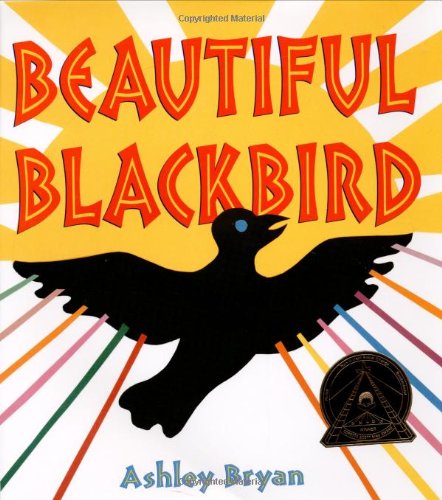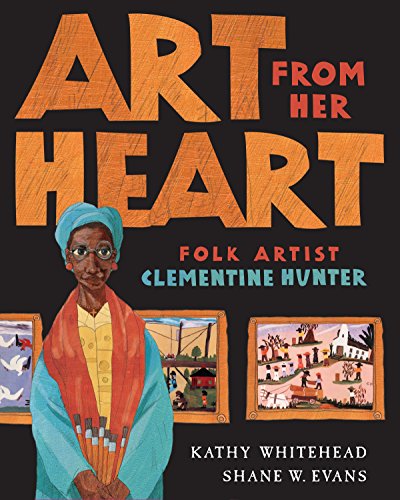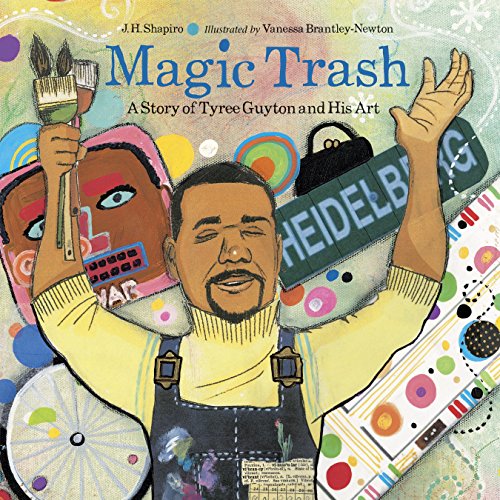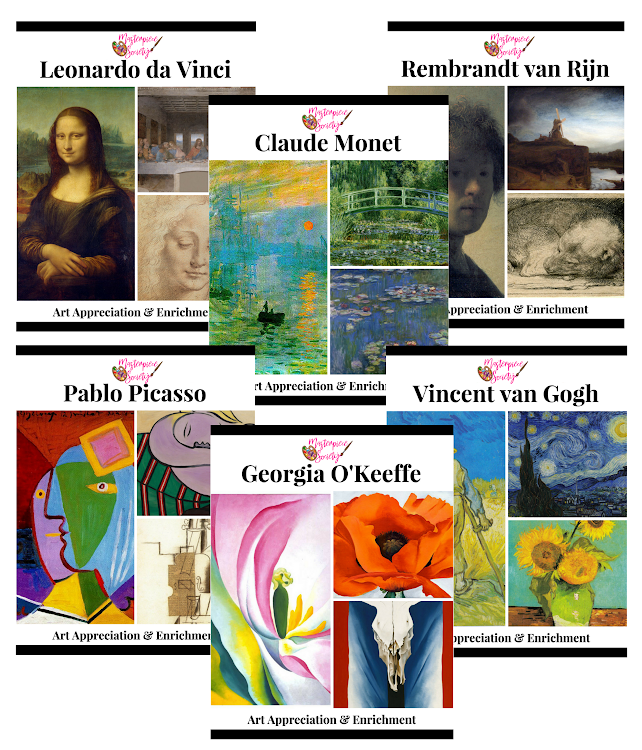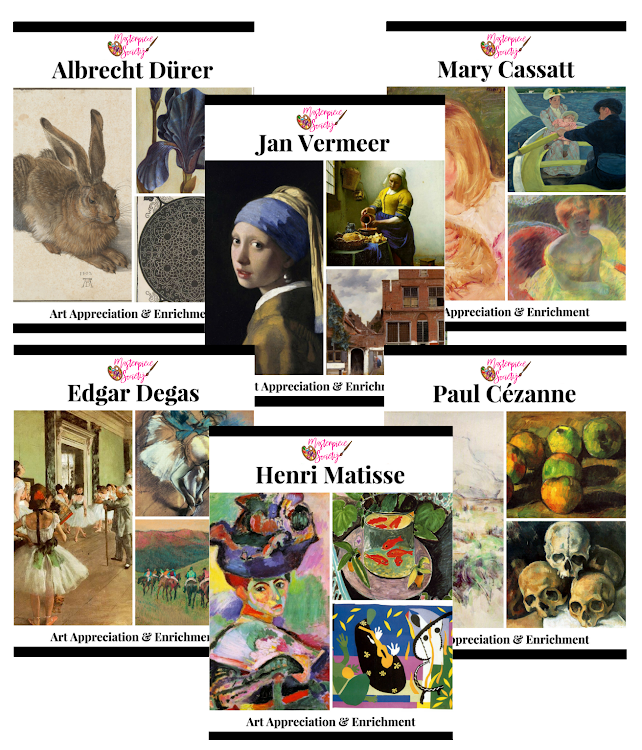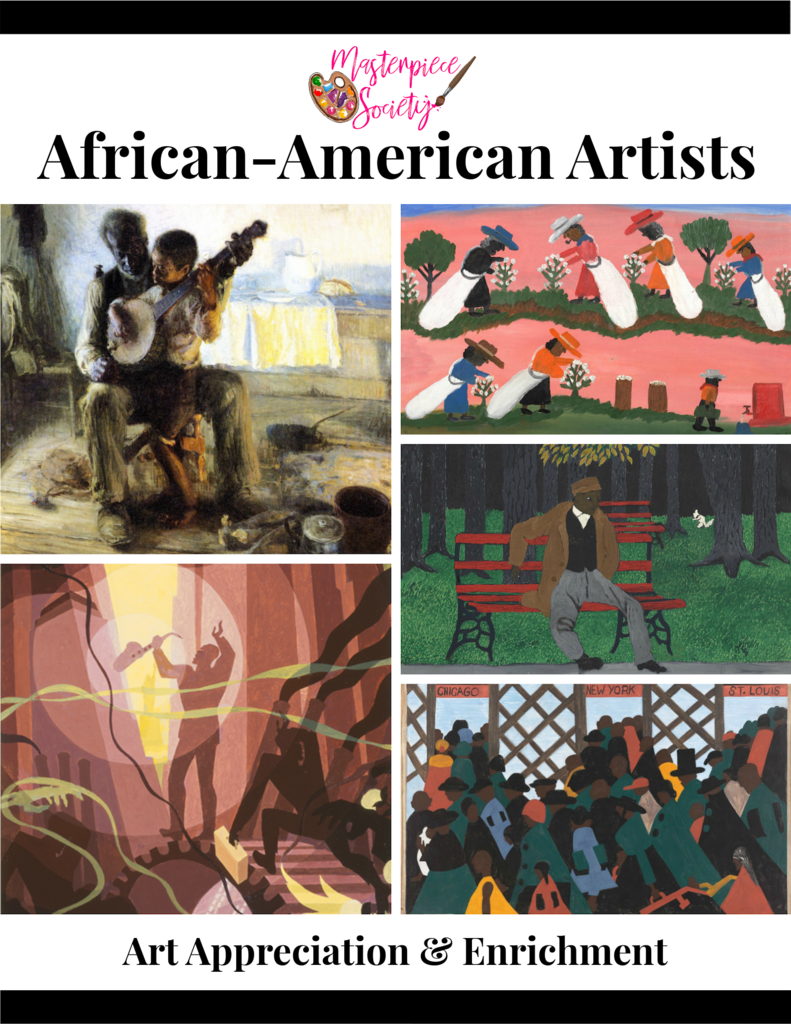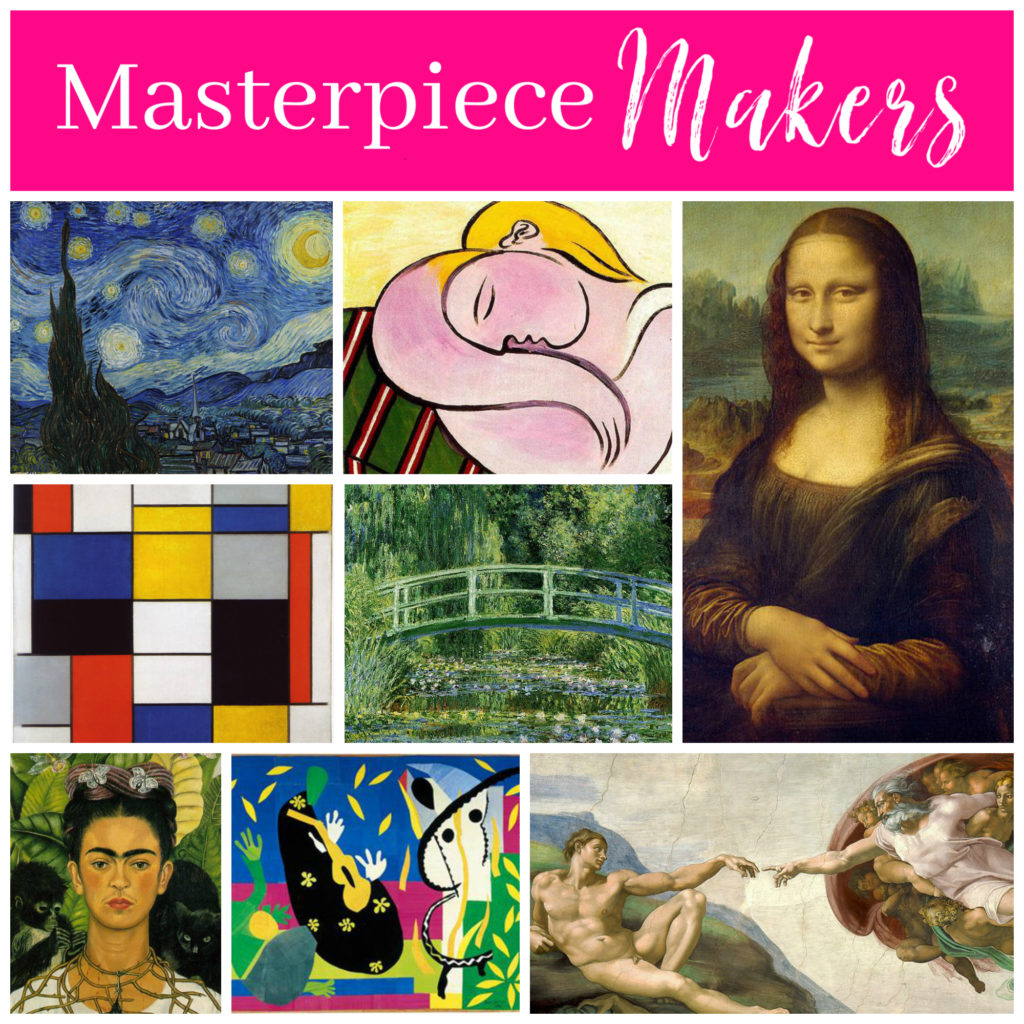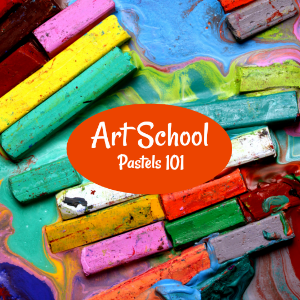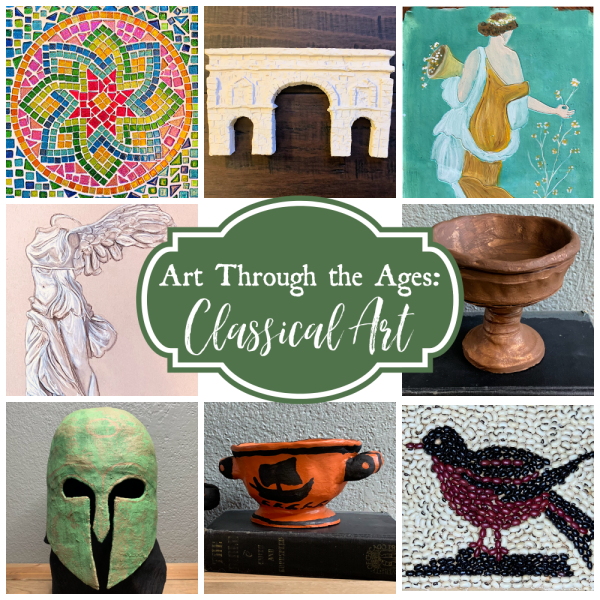Horace Pippin was a self-taught African-American painter. Learn more about this amazing artist through this art appreciation post.

“Pictures just come to my mind, and I tell my heart to go ahead.”
~Horace Pippin
Horace Pippin was born February 22, 1888, in West Chester, Pennsylvania. When he was young boy, Horace entered a contest with an art supplies company and was so excited when he won an assortment of crayons and a box of watercolors. He had always liked to draw, especially pictures of racehorses and jockeys from the racetrack.
Unfortunately, when he was fifteen years old, Horace had to drop out of school and find work so he could support his sick mother. He took up several different jobs, including working as a hotel porter and a used-clothing peddler.

Harmonizing
When America entered the first World War, Horace served among the Harlem Hellfighters. And though he was a soldier, he was first an artist. In fact, he carried journals with him everywhere, filling them with sketches and illustrations of his experiences in the army.
He said, “The War brought out all the art in me.”
Some of the scenes he drew were marching soldiers, men wearing gas masks in the trenches, and fighter planes in the sky. Only a few pages of these journals are still intact today, and sadly the rest were lost over time.


Less than a month before the war ended, Pippin was shot in the right shoulder by a sniper, which caused him to lose the use of his right arm. But when he returned to his home, Pippin attempted to restrengthen his arm by taking up painting.

The Barracks
He used an interesting method where he would take a hot poker and outline the images by burning them into the wood, then he would use his left hand to guide his right hand along and paint the images in.

The End of the War: Starting Home
His first painting was titled, The End of the War: Starting Home, and many of the other paintings he produced depicted his experiences in the war. He also painted scenes from the Bible, as well as portraits, landscapes, and moments from everyday life.

Domino Players
In 1920, Horace married a woman named Jennie Wade, and together they had a son. It was only in the last decade of his life, Pippin gained more recognition for his works, during which he had three solo exhibitions in 1940, 1941, and 1943.
He is most famous for the prominent themes of the injustice of slavery and segregation in America, which was included in many of his works.
Horace said, “If a man knows nothing but hard times he will paint them, for he must be true to himself.”

Mr. Prejudice
The last painting Pippin created before he died was titled, Man on a Bench, which some people have speculated was a depiction of Horace himself as he recognized he was drawing near the end of his life.

Man on a Bench
Horace Pippin died in 1946 at age 58, with his wife, Jennie, following shortly after him. Through his soldiering during World War I and his artwork depicting the injustice of slavery and segregation in America, he was a freedom fighter throughout his entire life.

